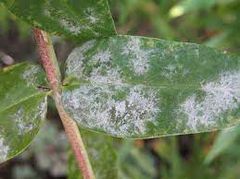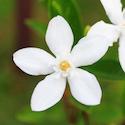Articles in powdery mildew (1)
See all articles for tag powdery mildew

Powdery mildew is a common group of fungal species that infect a wide variety of plants, including our jasmine plants. The symptoms of this disease are not difficult to identify, as the first clinical signs of these infections are, circular and irregular white spots on the surface of the leaf, which quickly spreads its growth on both sides of the leaves, leading to those leaves to wilt. Usually, powdery mildew starts infecting the lower leaves of our jasmine plant and makes its way up to the upper tissues of the plant. Those leaves often appear twisted, distorted, with a dry look, covered with white powder and ultimately wilted. Powdery mildew infection thrives on dry and a bit damaged foliage, being particularly infective in high humidity, warm temperatures and in low light conditions. Powdery mildew infection is rarely fatal, although, if left unchecked, it can cause a nasty situation around your jasmine plant, that could compromise its integrity. Powdery mildew is caused by a variety of closely related fungal species belonging to the Erysiphaceae family. The most common species that comprise powdery mildew are, Golovinomyces cichoracearum, Erysiphe cichoracearum, Erysiphe polygoni, and Microsphaera penicillata, but, there are many more, compiling a total of 700 different powdery mildew fungal species. Powdery mildew fungi are obligated and biotrophic parasites, which require a living host to infect in order for it to grow and further reproduce.
Read more